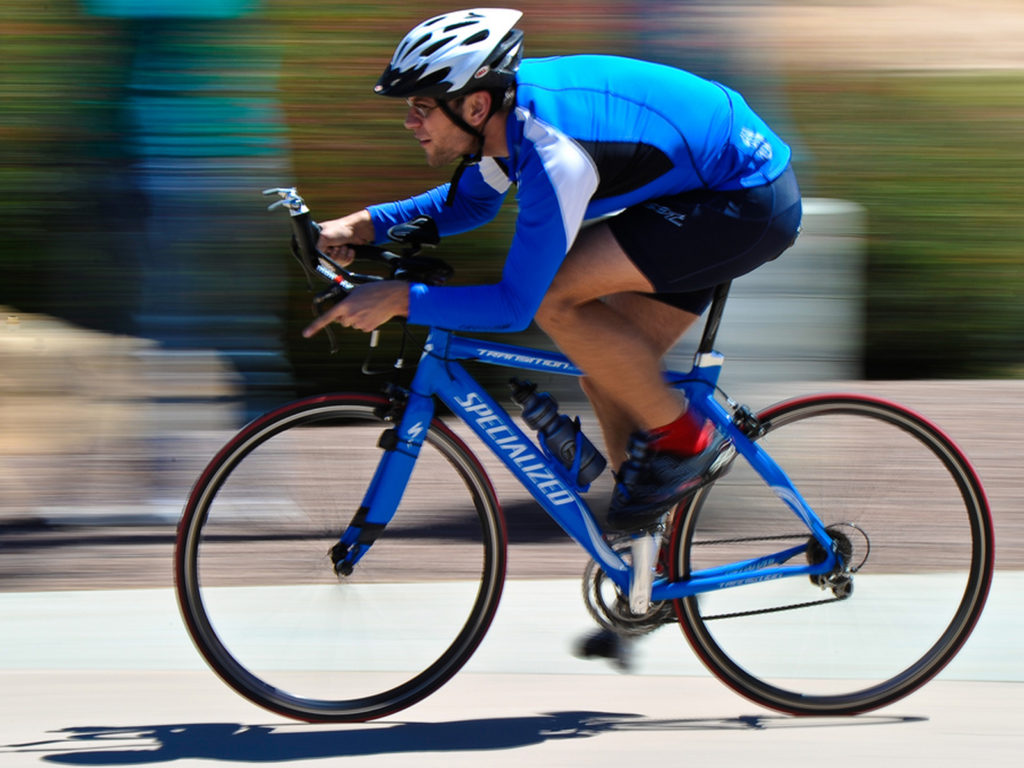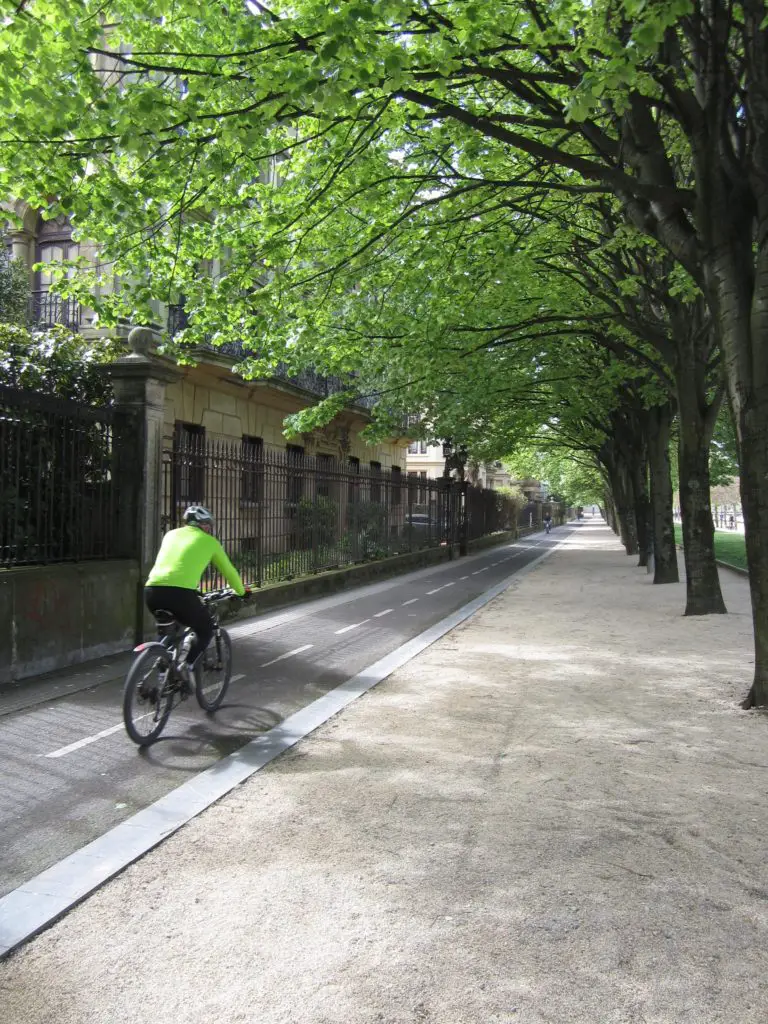Cyclists come from all walks of life and in all shapes and sizes. One thing that binds us all is that we all have to start somewhere. Every cyclist was at one time a beginner however in the beginning it could be easier or harder for some depending on many factors.
One question we often get asked is what is the average speed of a beginner cyclist? The average speed of a beginner cyclist can be anywhere between 10 and 18 MPH to which many factors contribute, such as the type of bicycle and its tires, the skill and fitness level of the rider, the weight of his gear, the terrain and route of the commute and the weather.
Let’s dive into these and see how each can affect your speed and how you can tweak them to your advantage. Not only making you faster but also making your bike ride and your commute much more enjoyable.
Fitness Level, Skill Level

This is a significant factor in speed for every cyclist whether a beginner or a veteran.
Electric bikes built for everything and priced for everyone. Shop Rad Power Bikes, America's #1 electric bike brand. Get out. Go further. Ride Rad.
Generally the more skilled you are the faster your average speed is going to be. This is true no matter what type of bike you ride or what type of riding you do.
In the beginning, especially if new to cycling altogether, you may find yourself moving at a very slow pace. The more you ride the more skill you will obtain. As your skill level progresses you are sure to notice you are getting to your destination with more speed and less effort.
In the same way as skill, your fitness level may be lacking as a beginner. This can lead to much slower speeds when you first start bicycle commuting. However do not fret as cycling is an excellent, low impact way to get healthy and where you are going at the same time. As you ride your fitness level will increase and as a result so will you average speed.
Type Of Bike

The type of bike being ridden is also another major factor in the average speed for a cyclist. As a general rule of thumb, a bike designed for pavement is generally going to be faster than one designed for off-road and mixed terrain environments.
Additionally, a bike that is built from lighter weight, high tech materials will also be lighter and therefore faster. For example, an aluminum bike will be lighter than one made from steel therefore making it a bit faster.

The wheel diameter will also play a huge role in how fast the bike will go. Another common rule to live by is the larger the wheel diameter the better it will maintain speed. For example, a 29” or 700c wheel will maintain speed better than a 26” or 650b.
If you are a beginner and looking to go faster then your best bet will be to start with a lightweight bike with big wheels such as a road bike, fitness bike, touring bike, or a hybrid.
Type of Tires
Another important aspect to consider when thinking about average speed is tire type.
Tires that are wide and knobby with a ton of surface contact are generally going to run much slower when compared to smooth thin tires.

Thick, knobby tires will often provide a ton of traction but will also have considerable rolling resistance making them slow going. On the other hand slick, thin tires will have very little rolling resistance meaning you will go much faster but they will also provide much less traction.
For the experienced cyclist, these can be an awesome choice in the summer, and when road conditions are dry and free of water or ice.
One of the best tire options for beginners is one that falls somewhere in between. One that is not too wide and knobby but also not too thin and slick.
Your Route
The way you go can have a significant impact on your average speed. If you are heading uphill most of the way or on a very rough road surface you are going to go slowly. Conversely, if your route of choice is all downhill or on a very smooth road surface you are going to go faster.
The route that you choose can make a big difference in your average speed. If looking to go faster and improve your average speed then seek out easier routes. Some key things to look out for are incline, road surface and traffic patterns.
As you continue to ride you will develop an intuition for these and over time you will improve upon your route.

The Terrain
This one goes hand in hand with the one right above.
Essentially a road surface such as asphalt is going to be a much smoother and faster ride than one made of gravel or dirt.
The terrain can have a big influence on your average speed, especially as a beginner cyclist. If you are looking to go as fast as possible then it is a good idea to stay out of the grass or the dirt.
The terrain can ultimately be the difference between a slow-going suffer-fest and a pleasant afternoon bike ride.
Gear Weight
Another thing that will improve your average speed is to choose gear that is not only functional but also lightweight. When adding things like racks, panniers, lights, etc. to your bicycle you are ultimately making it weigh more.
This makes it crucial for you to pick out high-quality gear that will not leave you weighed down. Every ounce counts and shaving off only a pound or two can make you faster in the long run.
Weather
This one is out of your control whether you are a beginner cyclist or a hardened veteran. The only difference is that maybe the hardened veteran has been through all weather conditions and knows how to make the best of it.
However, if you are a beginner the weather can be one of the biggest threats to a good average speed. Wind, rain, and snow all present their significant challenges and contribute to slowing you down.
Wind can be a great friend if it is behind you however it can be your worst enemy if it is blowing head first. Many cyclists have slung many insults to the wind as it can often make it feel like you have a flat tire.
Rain is another factor that can slow you down. Not only will you and your bike be heavier due to the added weight of being wet but the roads will be more slippery. To avoid crashing it is best to slow it down and take each turn with caution.

Snow and ice are similar to rain in many ways but often amplified. If you are going to be riding in snow or ice it is a good idea to put on thick knobby tires and take it very slowly.
How To Increase Your Average Speed
Wondering how to increase your average speed as a beginner cyclist? Consider all of the factors above and here are a few ideas that can help you do just that.
First is going to be improving your fitness and/or skill level. Often this will happen just by riding your bike more. The more you ride the better you will become and the more fit you will become. Give it some time and your average speed will improve naturally.
Another option is to get a different type of bike. Perhaps find something more suited for commuting and paved roads. You could also improve your current bike by cutting down your gear weight, getting lighter weight gear, or getting tires that are more conducive to commuting and riding on asphalt.
It is also a great idea to research your routes and what type of terrain you are going to face. Do not be afraid to try new routes or even hunt down shortcuts that can make your average speed higher and your commute faster.
Exploring the neighborhood is part of the fun of being a bike commuter. Seasoned bike commuters will often have many different routes to get to and from their destination making for a variety of scenery and challenges along the way.
Unfortunately, you cannot control the weather but you can plan for it. If inclement weather is in the forecast leave early and be sure to bring the right clothing or gear to help you through it.
The Bottom Line
While your average speed as a beginner cyclist may be lacking these are some good ideas to help improve it.
Even if you do not change anything about your bike, gear, or tires you can be sure that experience and training will ultimately improve your overall speed. Starting commuting can seem daunting at first but just like anything else it will get easier over time and you will find your average speed improving as time goes on.
So get out there, ride, and watch yourself get faster!
Happy Pedaling!
